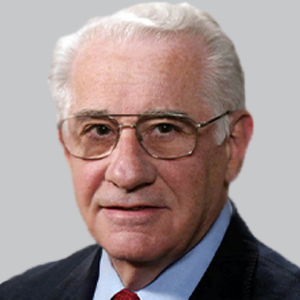Article
Nusinersen Is Efficacious in Presymptomatic SMA Over Long-Term
Author(s):
The entire 25-patient cohort from the NURTURE study was able to sit without support, while 88% were able to walk independently, according to new 45-month data in presymptomatic patients with spinal muscular atrophy.
Darryl De Vivo, MD, Sidney Carter Professor of Neurology and Pediatrics, Columbia University Irving Medical Center

Darryl De Vivo, MD
Results from additional analysis of the NURTURE study reveal that treatment with nusinersen (Spinraza, Biogen) shows prolonged efficacy and safety in presymptomatic pediatric patients with spinal muscular atrophy (SMA) after 45 months.1
Presented at the Cure SMA Annual SMA Conference, June 28-July 1, in Anaheim, California, and the 5th Congress of the European Academy of Neurology, June 29-July 2, in Oslo, Norway, the findings ultimately showed that 100% of the infants treated with nusinersen were able to sit without support while 88% were able to walk independently. Notably, these are milestones which are not documented in the natural history of SMA.
“These study results demonstrate the durable impact of pre-symptomatic, proactive treatment on transforming the natural course of this disease. We are seeing an extensive number of patients continually meeting child motor development milestones and making unprecedented gains in a previously hopeless and often fatal condition,” said Darryl De Vivo, MD, Sidney Carter Professor of Neurology and Pediatrics, Columbia University Irving Medical Center, in a statement. “Spinraza is setting patients on a path toward survival, greater mobility and independence, which is helping improve outcomes for patients of all ages.”
The therapy wasthe first approved for the treatment of SMA by the FDA in December 2016. According to Biogen, more than 7500 patients have been treated in real-world populations thus far.
NURTURE is an ongoing phase 2 open-label study of nusinersen in a population of 25 patients who are presymptomatic and most likely to develop SMA types 1 or 2. All of the patients received their first treatment dose by 6 weeks of age. Patients were a mean age of 3 years old. Additionally, the data showed that several patients in multiple subgroups were approaching the maximum mean score of 64 on the Children's Hospital of Philadelphia Infant Test of Neuromuscular Disorders (CHOP-INTEND). All told, those with 3 SMN2 copies (n = 10) scored a mean 63.4, while those with 2 SMN2 copies (n = 15) scored a mean 62.1.
The treatment was deemed well-tolerated, and no new safety concerns were identified after up to nearly 4 years of treatment.
“A few years ago, SMA patients had no treatment options and faced significant care challenges,” said Kenneth Hobby, President of Cure SMA, in a statement. “However, the future of SMA has changed and especially with early treatment patients now have a very strong chance to reach age-appropriate developmental milestones. These new data demonstrate the dramatic impact where children are now walking independently at four years of age, when the usual lifespan would be under two if untreated. This study provides additional evidence on the maintenance of these improvements. It’s critical that research in SMA continues to support the generation of real-world evidence in patients of all ages so that we better understand the long-term implications of SMA and treatment across all types.”
Earlier this year, data showed that the therapy was not successful long-term, but in patients who were treated earlier in life. That study data showed improvements in average Hammersmith Functional Motor Scale-Expanded (HFMSE) and Upper Limb Module (ULM) scores, and 6-Minute Walk Test (6MWT) distances by day 1150, with the FDA-approved treatment assessed in patients with SMA type 2 (n = 11) and type 3 (n = 17).2
The improvements experienced by the 28-patient cohort from earlier in 2019 were notable, with day 1150 scores improving by 10.8 points and 4 points for those with SMA type 2 in the HFMSE and ULM, respectively, and by 1.8 points and 92 meters for those with SMA type 3 in the HFMSE and 6MWT, respectively. ULM scores were not recorded for those with type 3 and 6MWT scores were not recorded for those with type 2.
Among those with SMA type 3, 19% (n = 3) demonstrated a clinically meaningful improvement in HFMSE score by day 253—including a nonambulant child. All told, 36% (n = 4) showed meaningful improvement by day 1050. For the 13 patients with SMA type 3 who were nonambulant, mean HFMSE scores were improved by 2.6 points while 17% (n = 2) and 44% (n = 4) showed meaningful increases by day 253 and Day 1050, respectively.
For ULM scores, those with SMA type 3 who were nonambulant had achieved the maximum score of 18 points by day 350 and maintained it through Day 1150. Of those 11 patients with SMA type 2, 45% (n = 5) showed an improvement of ≥2 points by day 253 and 56% (n = 5 of 9) by Day 1050. Darras and colleagues noted that there was a strong correlation between change in baseline HFMSE score and change in ULM score (r = .87) at Day 1050.
REFERENCES
1. Biogen Announces New Data Further Establishing SPINRAZA® (nusinersen) as a Foundation of Care in Spinal Muscular Atrophy for a Broad Range of Patients [press release]. Cambridge, MA: Biogen; Published July 1, 2019. multivu.com/players/English/8560251-biogen-nurture-study-spinraza-spinal-muscular-atrophy-treatment-data. Accessed July 1, 2019.
2. Darras BT, Chiriboga CA, Iannaccone ST, et al. Nusinersen in later-onset spinal muscular atrophy. Neurology. 2019;92:1-15. doi: 10.1212/WNL.0000000000007527.




